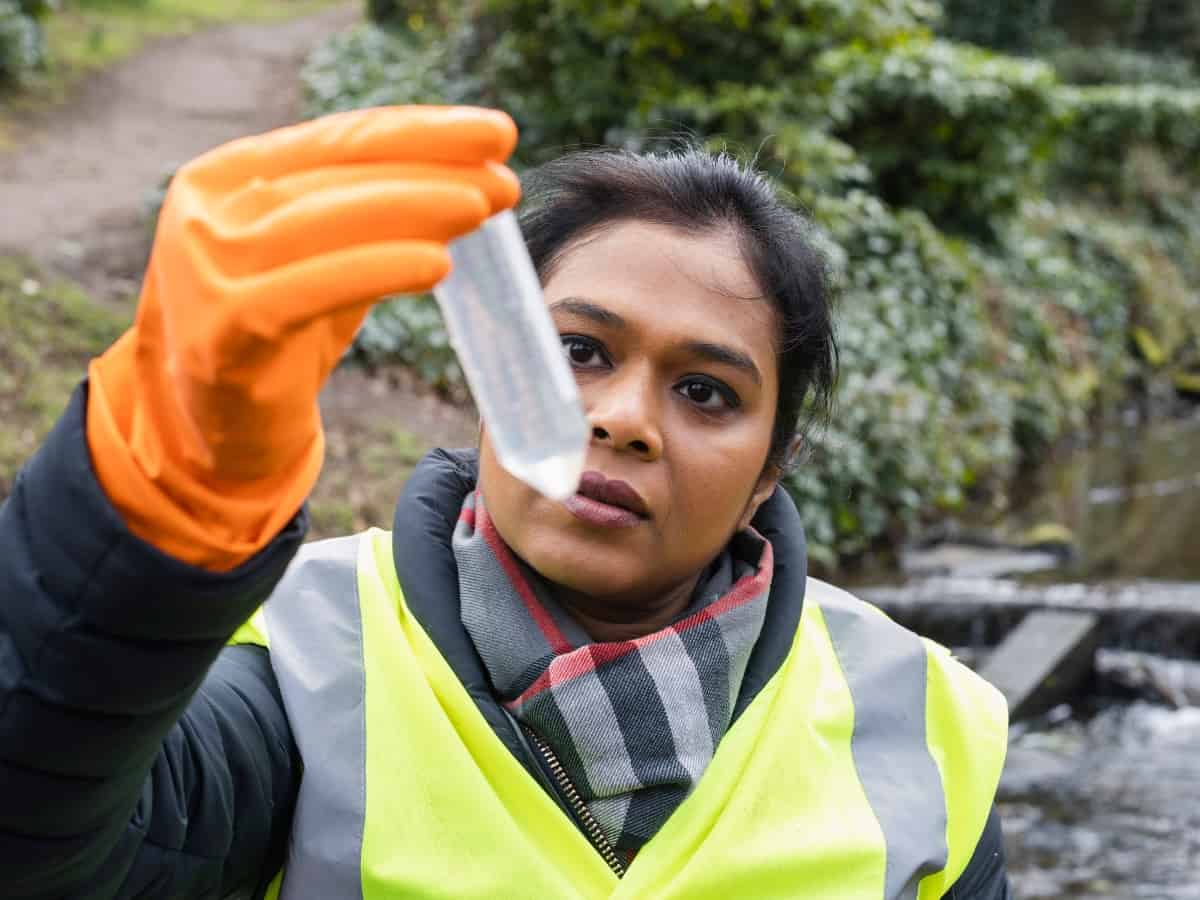When you’re running the water for your morning shower, do you ever stop to think about the safety of what is coming out? Most people don’t give it a second thought. However, there’s a growing number of people worried about PFAS contamination in the environment. Therefore, you might want to start paying attention to what could be getting into your water as you turn on that tap.
Read more to find out what PFAS contamination is, how it gets into our water supply, and the different ways that you can prevent it at home. Then, see how partnering with ONIT Home means clean water, free of forever chemicals.
What is PFAS Contamination?
Let’s get straight into it: PFAS contamination is a growing issue in the United States. This is because of the prevalence of PFAS chemicals in everyday products, such as food packaging, nonstick pans, cosmetics, shower curtains, and more. The Environmental Protection Agency (EPA) has listed PFAS as an emerging contaminant of concern.
The EPA defines an emerging contaminant as “a chemical or group of chemicals identified by one or more states as posing a potential risk to human health or the environment.” It’s also commonly referred to as a “forever chemical.”
Contamination from PFAS forever chemicals occurs when water becomes contaminated with these harmful substances. When water becomes contaminated with PFAS chemicals, it can cause health problems for humans and animals who drink it or come into contact with it.

Question We’re All Wondering: So What Are PFAS?
PFAS is a class of chemicals that includes per-and poly-fluoroalkyl substances, also known as PFAS.
A wide variety of consumer products contain PFAS. Manufacturers use these chemicals to manufacture household and commercial products. This chemical makes it so the products are heat, stain, grease, and water-resistant.
Examples of this include:
- Stain-resistant textiles
- Non-stick textiles
- Waterproof food packaging materials
The PFAS group of chemicals also includes perfluorooctanoic acid (PFOA) and perfluorooctane sulfonate (PFOS).
The use of PFAS started in firefighting foam and other industrial applications. This dates back to the 1950s with firefighters! They used foam with perfluorooctane sulfonate (PFOS) and perfluorooctanoic acid (PFOA). Together, this is a toxic substance after the compounds go through typical degradation. The Department of Defense has been replacing older toxic foams with a newer version. The new foam does not include PFAS compounds. However, some areas are still using the old solution with contaminations.
Call ONIT Home Today at 1-833-433-0331 to Get a Home Filtration System Professionally Installed In Your Household to Remove PFAS Contamination
Unveiling the Sources of PFAS
Water, air, fish, and soil are all sources of PFAS in different parts of the country and around the world. Scientific studies link environmental exposure to some PFAS to negative health effects in humans and animals. These health effects are currently being evaluated by federal agencies, including the EPA and the U.S. Food and Drug Administration (FDA). PFAS chemicals are present in a wide range of consumer, commercial, and industrial products. This makes studying and assessing potential human health and environmental risks difficult.
How Does PFAS Get Into Our Water Supply?
PFAS are released into the environment when they are produced, used, disposed of, or spilled. Rainwater runoff can carry PFAS into lakes, ponds, etc. It can also seep into the soil and make its way into the groundwater.

PFAS Enter Our Drinking Water Supplies Through:
- Leaching from landfills or industrial sites where disposal happens.
- Runoff from industrial facilities where it’s used or manufactured.
- Runoff from military bases from firefighting foam.
- Water from industrial sites seeps into groundwater supplies.
- Rainfall washes away residue from industrial sites or military bases and carries it into nearby waterways.
Imagine that the water used by your well or the public water system comes from a PFAS-contaminated surface or groundwater source and isn’t properly treated to get rid of the chemicals. In that case, the chemicals might be in your drinking water and could enter your body if you ingest them by drinking the water or eating food that was prepared with it.
What Products Are PFAS’ Found In?
- Takeout packaging (wrappers, boxes, bowls, etc.)
- Microwave popcorn bags
- Stain-resistant carpeting
- water-repellent clothing (fabric treated with Scotchgard)
- Ski wax
How is PFAS Contamination Harmful?
PFAS contamination is harmful in two ways:
- It can leach into your drinking water
- It can get into your body through contaminated food sources like fish.
These compounds, unfortunately, do not degrade quickly in the environment. Once ingested by humans, PFAS can build up in the bloodstream over time and cause health problems, reproductive problems, and alter immune system response.
A growing body of evidence suggests that PFAS exposure can cause:
- Decreased fertility
- High cholesterol
- Obesity
- Liver damage
- Thyroid disease
- Hormone suppression
- Cancer
These chemicals are easily transported through the air, dust, food, soil, and water.
Call ONIT Home Today at 1-833-433-0331 to Get a Free Water Test. See Exactly What’s In Your Tap When You Give Us a Call!

What Are the New EPA Regulations?
As of October 2021, there’s 2,854 locations with known contaminations. These locations are spread across all 50 states and two territories. As on May 2022, five PFAS were added by the EPA to a list of risk-based values for site cleanups.
The Regional Remedial Management Levels and Regional Screening Levels help determine whether response or remediation actions are necessary. In October 2021, it was announced that they are developing a testing strategy for PFAS. This comes with intentions to use their powers under the Toxic Substances Control Act to require manufacturers of these chemicals to provide information on PFAS. While this is moving in the right direction, it may take years to finalize the requirements.
Are There Proposed Mandatory Standards For This Contamination?
There is no enforceable federal standard for PFAS in drinking water. The EPA has established a non-enforceable health advisory level of 70 ppt for the sum of PFOA and PFOS. Remember, PFAS compounds aren’t regulated by the EPA.
They’re also not subject to federal drinking water standards. So, it’s up to states and localities to set limits on how much PFAS can be present in drinking water. In many places around the country, there are no standards at all for PFAS chemicals in drinking water. In other places, there are only voluntary guidelines set by companies that make or use the compounds. For example, Minnesota and West Virginia had a three million dollar lawsuit for PFAS contamination.
What Is Your City Water Treatment Doing to Help?
To supply communities with safe drinking water, public drinking water systems employ a variety of water treatment techniques. Coagulation, flocculation, sedimentation, filtration, and disinfection are common water treatment processes used in water treatment plants. The EPA sets the guidelines for acceptable amounts, and the city follows the recommendation.
Although the process is thorough, it does not remove all PFAS from the public water supply, which is why home filtration is recommended.
How a Whole-home Water Filtration System Can Help
One of the most effective ways to reduce PFAS exposure is with a whole-home water filtration system. A whole-home system can remove contaminants from the water that flows through your plumbing, both drinking water and wastewater.
The EPA has found that PFOA and PFOS resist the filtration of water via most chemical and microbial filtration techniques. However, the following are two methods that have proven effective in removing both substances from drinking water:
- Granular Activated Charcoal (GAC)
- Reverse Osmosis
Reverse osmosis and GAC water filtration units can both be effective in removing the PFAS compounds that commercial labs typically analyze. When it comes to protecting your whole home, having a reverse osmosis water filtration system is your best bet.
Call ONIT Home Today at 1-833-433-0331 to Get a Home Filtration System Professionally Installed In Your Household to Remove PFAS Contamination

Reduce Your PFAS Exposure By Doing the Following:
Limit Pre-Packaged Food Consumption
Avoiding the packaging that comes from takeaways and convenience foods is another way to reduce exposure to PFAS chemicals because many packaged foods come in plastic containers or wrappers made from fluorinated materials.
Replace Your Teflon Pans
Get rid of your Teflon pans in favor of stainless steel or cast iron. Nonstick pans have a layer of Teflon or another type of synthetic fluoropolymer called PTFE (polytetrafluoroethylene) to keep food from sticking to them. The chemicals leach into food and water when heated, which means that anything you cook in these pans contain small amounts of PFAS. To protect yourself from PFAS exposure when cooking food at home, replace all nonstick cookware with stainless steel or cast iron.
Get a Water Test to See What’s In Your Water
If you live near an airport or are near any military installations that use firefighting foam, you may be at risk for contamination. Understand what’s going on inside your home water with a water test. This way, you know exactly what is in your home water source.
Have a Home Water Filtration System With ONIT Home
If your water supply shows contamination with PFAS, installing a whole-house water filter is an effective way to remove these chemicals from your tap water.
We professionally install all systems, making sure you can rest easy with a system that works correctly the first time you ever use it. Our professionally installed services ensure that your property’s water is clean, safe, and incapable of damaging household appliances. Not only will your home have fresh, clean tasting water out of the tap, but your appliances will have a longer life cycle! Experience better tasting water, cleaner clothes, and spotless dishes when you have a home filtration system with ONIT Home.
To get started, visit us online or give us a call right now at 1-833-433-0331.



